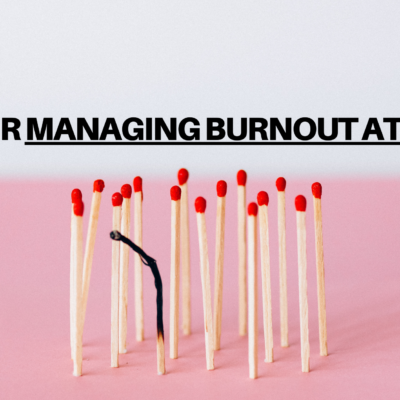Tips For Managing Burnout At Work: In the fast-growing and demanding world of today’s workplaces, burnout has become an increasingly dominant issue. The continuous stress of meeting deadlines, exceeding expectations, and maintaining a work-life balance can take a toll on employees’ mental and physical well-being.
In this article, we will talk about burnout at work, its symptoms, and effective strategies for handling and preventing it.
Also Read:
- Things I Can Do To Better Myself.
- Micro Ways to Improve Your Life.
- Signs You Need to Change Life.
- How to Become a Better Thinker?
- Positive Mental Health Habit that will Change Your Life.
Understanding Burnout at Work
Burnout is more than just feeling tired after a long day at work; it is a state of regular physical and emotional tiredness, usually accompanied by feelings of detachment from one’s job. It can result from long vulnerability to high levels of stress and a sense of being dominated by the demands of work.
Identifying the Signs of Burnout
Before managing burnout, it is important to identify its signs and symptoms. Common indicators include constant fatigue, decreased productivity, increased negativity towards work, and a decline in overall satisfaction and engagement. Physical symptoms can also be seen, such as headaches, sleep disorders, and changes in hunger.
Recognizing Workplace Elements Contributing to Burnout
Burnout is not just an individual problem but usually arises from systemic problems within the workplace. Extreme workload, unrealistic expectations, lack of control over one’s work, poor communication, and a lack of praise or reward are common contributors. Recognizing these elements is a critical step in handling and preventing burnout.
Tips For Managing Burnout At Work
Establishing Healthy Boundaries
Setting boundaries is a basic part of preventing burnout. This includes clearly defining work hours, breaks, and personal time. Employees should communicate their limits to colleagues and supervisors, highlighting the importance of maintaining a balance between work and personal life. Learning to say ‘no’ when required is a powerful skill in avoiding overcommitment.
Prioritizing Self-Care
Self-care is not a luxury; it is a need for maintaining mental and physical well-being. Satisfactory sleep, regular exercise, and a balanced diet contribute to overall strength in the time of workplace stress. Taking breaks throughout the day, even short ones, can help refresh and refocus the mind.
Seeking Social Support
Connecting with colleagues can deliver a sense of connection and support. Sharing experiences and discussing challenges can help people realize they are not alone in their struggles. Creating a strong support network at work creates an environment where colleagues can depend on each other during difficult times.
Clarifying Expectations and Roles
Vagueness in job roles and expectations can contribute to stress and burnout. Regular communication with managers to clarify expectations and discuss workload can help employees better manage their duties. Setting clear goals and priorities ensures that everyone is on the same page and decreases uncertainty.
Time Management and Goal Setting
Effective time management is important in stopping burnout. Breaking down tasks into effortless steps, setting real deadlines, and prioritizing important activities can help people stay organized and focused. Setting attainable goals creates a sense of achievement and decreases the feeling of being overwhelmed.
Take Break
Taking breaks during the workday is important for maintaining productivity and stopping burnout. Motivating employees to step away from their desks, go for a short walk, or engage in a relaxation exercise can have a powerful effect on mental well-being. Additionally, using relaxation time is necessary for disconnecting from work and recharging.
Providing Training and Resources
Workplace training on stress management, time management, and managing strategies can provide employees with the tools they require to handle the challenges of their roles. Employers can also offer help such as counseling services, workshops, or wellness programs to support their staff in handling stress and stopping burnout.
Fostering a Positive Work Environment
A positive work environment is a strong treatment for burnout. Developing a culture that appreciates open communication, teamwork, and appreciation can contribute to a more supportive workplace. Identifying and celebrating accomplishments, both big and small, creates a positive environment that encourages employees.
Promoting Flexibility and Freedom
Providing employees with flexibility in their work arrangements, such as remote work opportunities or flexible schedules, can contribute to a healthier work-life balance. Empowering people with a sense of freedom and control over their work promotes a more positive and less stressful work environment.
Regularly Evaluating and Adjusting Strategies
Managing burnout is a continuous process that needs continuous assessment and transformation. Regularly checking in with employees, taking surveys to gather feedback, and being open to changing strategies based on the evolving requirements of the workforce are important components of a proactive strategy for handling burnout.
At The End
Handling burnout at work is a shared responsibility that includes both employees and employers. By identifying the signs of burnout, handling its root causes, and executing useful strategies, workplaces can create environments that support the well-being and productivity of their employees.








